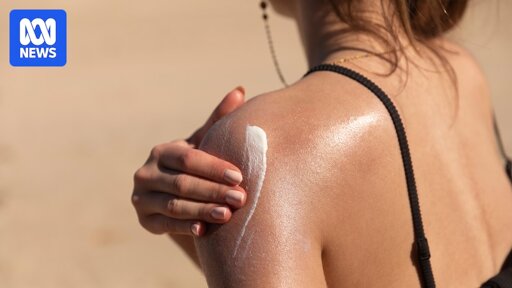Secondary / backup account for @MHLoppy@fedia.io
(header photo by Brian Maffitt)
- 13 Posts
- 7 Comments

 4·16 days ago
4·16 days agoI nominate the unregistered charity of @Joshi@slrpnk.net who makes efforts to promote health education and foster civil discussion in online spaces.
Tenderizer may have a different view, but for me personally don’t worry about losing the money due to a random internet discussion. If you would like to use your money to do some good in the world, I don’t want that to be conditional on who spent more time researching a random topic.
I would, however, like to re-iterate this quote:
The greatest obstacle to discovery is not ignorance—it is the illusion of knowledge.
And remind everyone that at any given time we know approximately nothing about anything so be cautious about being overconfident in what you think you know!

 3·16 days ago
3·16 days agoImo you were too vague in your conditions.
https://doi.org/10.1001/jamapediatrics.2024.5542
This systemic review and meta-analysis includes this (weak!!) negative health result even at <=1.5mg/L fluoride/water (1.5mg/L being the upper limit for drinking water that the WHO recommends according to many papers including this paper, but which annoyingly doesn’t seem to have an up-to-date page on the WHO website to confirm with).
Sixty-four studies reported inverse associations between fluoride exposure measures and children’s IQ. Analysis of 59 studies with group-level measures of fluoride in drinking water, dental fluorosis, or other measures of fluoride exposure (47 high risk of bias, 12 low risk of bias; n = 20 932 children) showed an inverse association between fluoride exposure and IQ (pooled SMD, −0.45; 95% CI, −0.57 to −0.33; P < .001). In 31 studies reporting fluoride measured in drinking water, a dose-response association was found between exposed and reference groups (SMD, −0.15; 95% CI, −0.20 to −0.11; P < .001), and associations remained inverse when exposed groups were restricted to less than 4 mg/L and less than 2 mg/L; however, the association was null at less than 1.5 mg/L. In analyses restricted to low risk-of-bias studies, the association remained inverse when exposure was restricted to less than 4 mg/L, less than 2 mg/L, and less than 1.5 mg/L fluoride in drinking water. (emphasis added)
I would personally consider this to qualify, though I will understand if you want to be more strict. I’m also not the person you were replying to lol.
edit: This one is a bit less ambiguous, though it’s not open access https://doi.org/10.1016/j.matpr.2023.05.645 (the language they use also makes it sound like they have an agenda, but I know nothing about the authors)
Fluoride improves tooth structure, preventing inflammation and deterioration. Water fluoridation should not exceed 1.0 mg/L to protect dental plaque and public hygiene [35], [36]. Fluorosis affects teeth once 1.0 mg/L is surpassed. This condition causes tooth stains and cavities.
Which I think qualifies as “suggests it is suspected to be unsafe at recommended levels” if you allow the recommend level to be “some nebulous amount up to 1.5mg/L” and for “unsafe” to be “causes or is associated with negative health effects”.

 2·16 days ago
2·16 days ago(I am not an expert on the topic and generally want to leave public health policy to those with relevant knowledge/expertise, not laypeople like us)
Possibly this? https://doi.org/10.2903/j.efsa.2025.9478 (which is possibly not a regular journal article and being unfamiliar with the European Food Safety Authority I don’t know how their publishing process works, but it’s still an evidence-based publication by the government-run EFSA)
Here’s the full abstract - the full paper is quite a long read:
Abstract
This updated risk assessment evaluated evidence on potential adverse health effects of fluoride related to all sources of oral exposure as mandated by the European Commission. Fluoride benefit assessment was not included. Effects on the central nervous system, thyroid and bone were prioritised. Evidence from human studies indicates that total fluoride intake is associated with adverse effects on the developing brain at drinking water concentrations > 1.5 mg/L. The evidence of such associations below 1.5 mg/L was not sufficiently consistent to draw conclusions for risk assessment. Using drinking water concentration of 1.5 mg/L as a reference point, a safe level of intake including all sources of oral exposure of 3.3 mg/day was established for pregnant women to protect the fetus. This safe level of intake was extended to apply to other adults and children > 8 years. It is considered protective also against possible adverse effects on thyroid function and bone mineralisation, for which associations have been observed at water concentrations > 1.5 mg/L. Dental fluorosis was considered the most sensitive endpoint for children ≤ 8 years. Tolerable upper intake levels (UL) of 1.0, 1.6 and 2.0 mg/day were established for infants, toddlers and children 4–8 years, respectively. These ULs are considered protective against other possible adverse effects of fluoride, including neurodevelopmental outcomes. Aggregate exposure included intake of fluoride from food, drinking water, discretionary salt and (ingested) dental care products. Aggregate exposure based on the mean concentration of fluoride in EU drinking water (submitted data) was below the above health-based guidance values (HBGVs) for all age groups. Aggregate exposure exceeds the HBGVs at the 95th percentile of intake in the scenario of the P95 concentration of fluoride in EU drinking water, for all age groups except adolescents. The risk assessment suggests that the current legal limit for drinking water (1.5 mg/L) in the EU is not sufficiently protective. (emphasis added)
This is from July of this year so it might match up with what Tenderizer is remembering.
The EFSA has a plain language summary that’s targeted for the general population rather than the slog of the above paper which isn’t. Quoting what I believe is most relevant from the “Outcomes” section:
-
It was found that if fluoride concentrations in drinking water were at the EU legal limit of 1.5mg/L, this would lead to a total fluoride exposure above the newly determined ULs and safe level of intake.
-
Actual drinking water concentration data submitted to EFSA indicated that more than 86 % of samples contained less than 0.3 mg/L fluoride, and more than 97 % of samples contained less than 0.7 mg/L fluoride.
-
Based on these data, EFSA estimated that for typical fluoride concentrations in drinking water in Europe total fluoride exposure does not exceed the safe level of intake or the ULs determined for the different age groups (except in 4-8-year-old children) and therefore does not pose a health concern.
For context, Australian water:
Typical values in Australian drinking water
In unfluoridated supplies, fluoride concentrations are typically less than 0.1 mg/L, but can range from less than 0.05 mg/L up to 1.5 mg/L, with the higher values reported from groundwater sources.
In fluoridated supplies, the target fluoride concentration is between 0.7 and 1 mg/L, with the lower concentrations applying where the climate is hot, to allow for a higher average consumption of water.
-

 5·19 days ago
5·19 days agoHad an okay ending at least!

 2·27 days ago
2·27 days agoI assume you’re asking as someone from outside of Australia?
Anyway, answering only from personal / anecdotal experience:
Are people openly talking about the genocide in Gaza or is it considered some taboo topic?
Seems fine among the politics-is-okay crowd. Not sure about the don’t-care-about-politics crowd, but it makes national news often enough that I doubt it’s unusually “taboo” compared to other subjects that tend to be politically or emotionally charged.
Do people get fired for saying genocide is wrong or the the people in Gaza have a right to live?
Are people getting dissapeared for expressing solidarity with Palestinians like they are in the USA?
Not that I’m aware of, in general. I know some student protests were cracked down on earlier this year but we weren’t deploying snipers on campuses at least.

 2·5 months ago
2·5 months agoI was going to post this as its own submission, but the title is so long it doesn’t even fit in the submission length lol:













omg you madlad